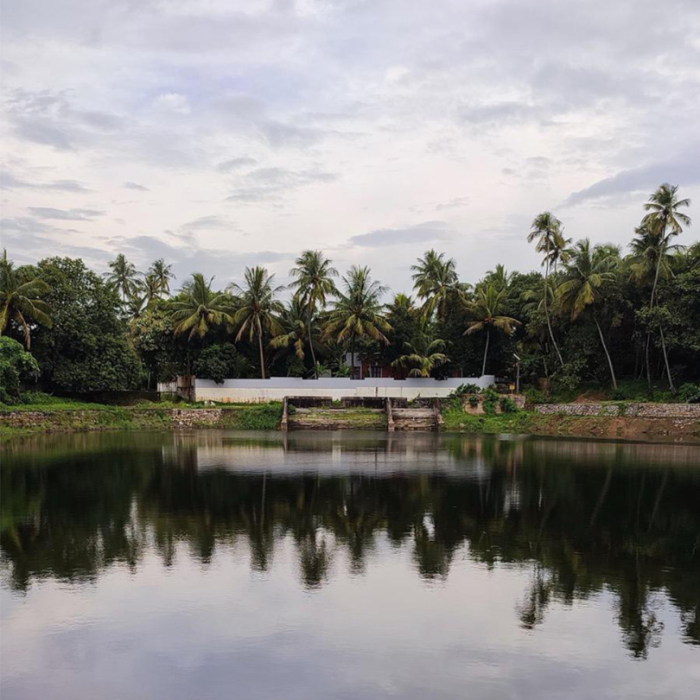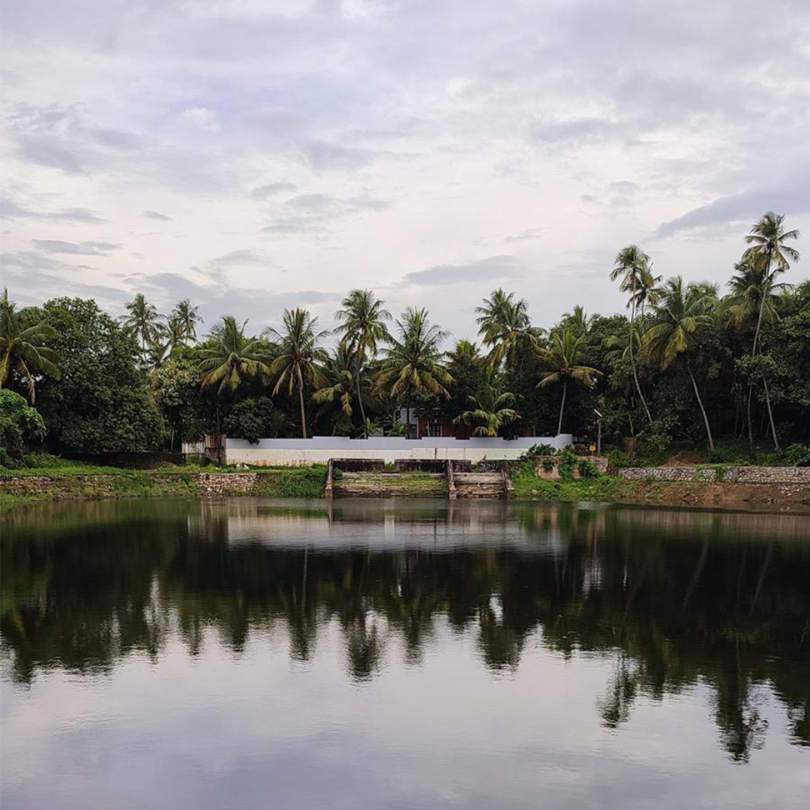Life, Death, and Sustenance
By Shreya Menon
Water holds utmost significance to the average Indian – the primordial spiritual symbol. It is the vessel that carries one from life to death and through everything in between… Even as an atheist living in my hometown, it was impossible to not be enveloped by water in its philosophical and spiritual wholeness. Designated female as per the Vedic scriptures, water is the mother, goddess, giver, and nourisher. While humans in their quest for power have tainted the purity of this resource and made it the root cause of caste-based social hierarchy and discrimination in this very country, I wish to steer us in a direction of how water also acts to bring communities together.
The action of coming in contact with water was believed to be a ritual of purification, enlightenment and thus birth… I remember my baby sister and I rushing to the temple priest as kids, and standing with closed eyes devoutly, while he sprinkled rose-scented holy water which we hoped would help us ace our exams or win a race (or even get some superpowers, who am I to complain?).
I also remember how after I lost my mother to cancer and cremated her, the family traveled together to a nearby sacred water body to scatter her ashes. I watched in awe of how the ritual served as a method of closure during death and people left with a sigh of relief in being instrumental in helping transport the soul to its auspicious next life.

But how can we forget the in-betweens, like peanut butter or jelly in a sandwich. It is the flavourful middle that brings a smile to my face. Summer breaks in school meant a trip to our grandparents’ house and having the time of our lives with a dozen of my cousins. I loved our tharavadu (ancestral home in Malayalam) with its sloping Mangalore tiles, verandahs polished in red oxide, kitchens always stocked with food and the large mango tree bent from the weight of its fruit, inviting us to climb its branches and chomp on the juicy mangoes.
A few minutes walk from the tharavadu was the local temple and next to it – the temple pond, it was here that all the cousins and the neighborhood kids learnt how to swim. The water was cool, fresh, and green. We shared the space with fishes, frogs, and other biodiversity I shudder to think about. While the kids would splash about giggling, hold competitions on who could hold their breaths the longest or do the most number of flips before diving in or race to the other end of the moss-lined pond to grab a flower for their latest crush, parents and the rest of the community had their routine too. The womenfolk would sit on the steps leading to the pond keeping a watchful eye on these kids in between the banter with their friends, men would drink a cup of tea adjacent to the tea stall near the pond while they animatedly shared their take on the recent political occurrence and then there were the stray dogs, cats, and cows who were a welcome addition to this mellifluous cacophony. There would also be the occasional poet at heart watching all this from a cozy corner and weaving up her next verse.
Water here helped create a space where humans could exist in their truest forms, my temple pond was one of many that dot the fabric of Kerala. It was organic placemaking at its best where water was channeled to create a sense of solace, belongingness, and ownership. Water brought people together, water weaved a community, water sustained the community.
Story by Shreya Menon
Studio CultureShift
“[My favorite body of water is] a brook - small but resilient to keep moving ahead, finding its way through nooks and crannies, shaping beautiful pebbles along the way and being a source of respite to the weary traveller. I liken this to my spirit who wants to be the change she wishes to see.”
Stories of Water and Change
In honor of World Water Day 2024, this online feature is dedicated to celebrating the profound connection between individuals and water, while shedding light on pressing global water issues. This diverse collection of personal narratives and photographs serves as a testament to the multifaceted relationships we share with this vital resource. As we immerse ourselves in these accounts, we are not only inspired by the depth of individual experiences but also reminded of the urgent need for collective action to safeguard our planet’s most precious resource.








